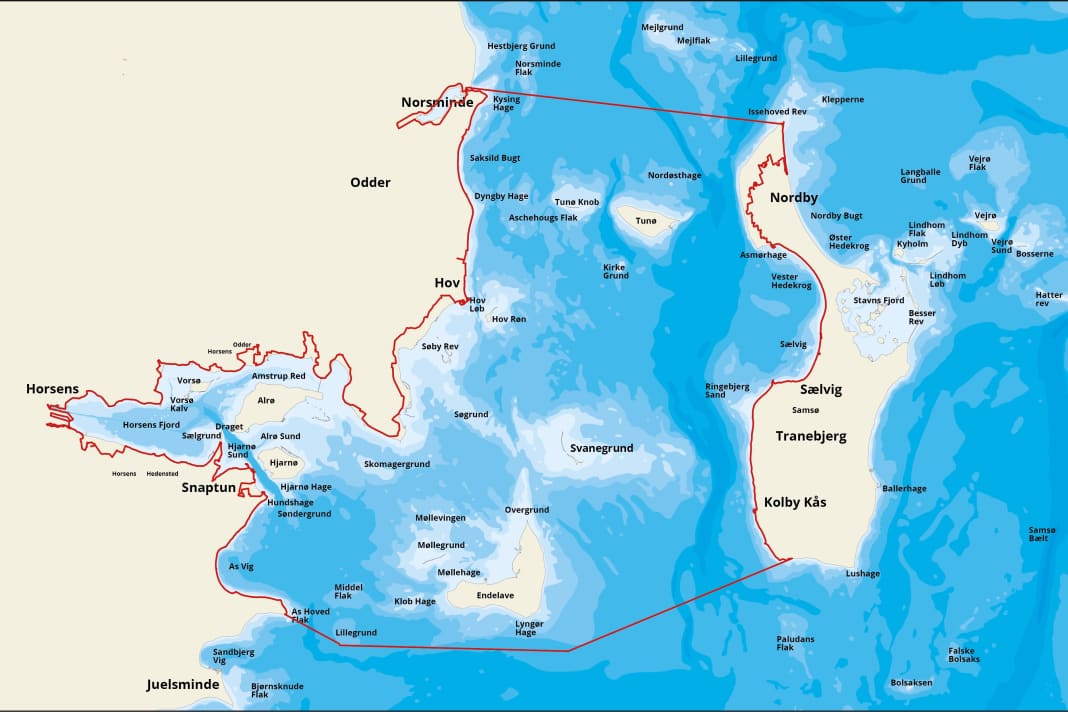


The islands of Samsø, Endelave and Tunø are popular destinations for German sailors, but like Horsens Fjord, they are heavily affected by environmental pollution. Fertilisers, sewage treatment plants and industrial run-off contribute to nutrient enrichment in the sea. This excess of nutrients promotes the growth of algae, which clouds the water and reduces its oxygen content. This creates so-called dead zones in which neither fish nor crustaceans or other larger creatures can survive.
Over the next five years, reefs, seagrass meadows and biogenic structures in the shallow fjord landscape, which has suffered from a lack of oxygen for decades, are to be restored in the 84,000-hectare Svanegrund Nature Park. 110 million DKK (15 million euros) will be provided by the A.P. Møller Fund.
Exactly how the nature reserve will affect water sports enthusiasts remains to be seen. However, there is reason for hope, as protected areas in Denmark are not traditionally characterised by large no-go zones. Instead, they are designed to bring people closer to nature. Facilities already planned on land include information stands, birdwatching towers and campsites with overnight cabins. However, restrictions on anchoring should be expected due to the new seagrass beds.
"Life around Danish waters is under threat, and it is our duty to take action. I am therefore pleased that the foundation can improve the living conditions for animals and plants in Svanegrund Nature Park. It also raises awareness of our shared responsibility by enabling more experiences and activities in the area's diverse nature," says Ane Mærsk Mc-Kinney Uggla, Chair of the A.P. Møller Foundation for General Purposes.
More articles on protecting the Baltic Sea
- Law firm: Baltic Sea National Park legally inadmissible according to expert opinion
- Baltic Sea National Park: How YACHT readers react to the plans
- Environment: Artificial coral reefs in Kosterhavet National Park
- National Parks of the Baltic Sea: The Slowinski National Park
- Baltic Sea National Park: Restricted zones through the back door?
